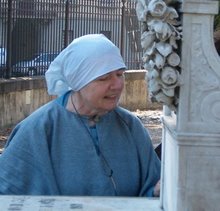UNESCO, MEMORY OF THE WORLD
NOMINATION APPLICATION
'FROM GRAVES TO CRADLES'
FLORENCE'S 'ENGLISH' CEMETERY, ITS ARCHIVE, ITS MEDIATHECA,
ITS RESEARCH, ITS RESTORATION
A piazza in Florence, a cemetery on a hill with its tall cypresses, perhaps once an Etruscan tomb, now strangely set in the midst of swirling modern traffic, through whose gates visitors step into a different past. An archive, a library, in situ, with the documents and also with the books by and about the persons buried here: Elizabeth Barrett Browning, Walter Savage Landor, Frances Trollope, Southwood Smith, Arthur Hugh Clough, Jean Pierre Vieusseux, Hiram Powers, Theodore Parker, Richard Hildreth, the sister of Henry Adams, the wife of Holman Hunt, the daughter of Arnold Bőcklin, the son of Ferenc Pulszky, the governess of the Tsar of Russia, the son of William IV of England, twelve participants of the Peninsula and Waterloo battles against Napoleon, many friends of Florence Nightingale, whose tombs the ex-slave Frederick Douglass visited. A place filled with memory, for Florence, for Italy, for Europe, for the world. A place dense with meaning, a burning glass of history, for Civil Rights, for the Aboliton of Slavery, for the rights of nations (among them Greece, Italy, Poland, Hungary), to be freed from foreign oppression, for the rights of women, for the rights of children, for health and welfare, a place for poets and sculptors, a place for writers and artists. In its oval are multiple languages, a United Nations in a city square, peaceably altogether, the archives in French and Italian, the tombstones they document in Hebrew, Greek, Roman, Cyrillic and fraktura alphabets and in most European languages, including Rumantsch. A cemetery celebrated in Arnold Bőcklin's 'Island of the Dead' and in Sergei Rachmaninoff's music to the same. Nobles and commoners lying with slaves, serfs and servants, all walks of life, the Swiss owners burying pauper travellers for free. In the nineteenth century a beautiful garden, now being restored in the twenty-first, after years of abandonment and neglect, from research in Victorian diaries and guidebooks and from old photographs and paintings. A place whose intent was, is and will continue to be the 'Memory of the World'.
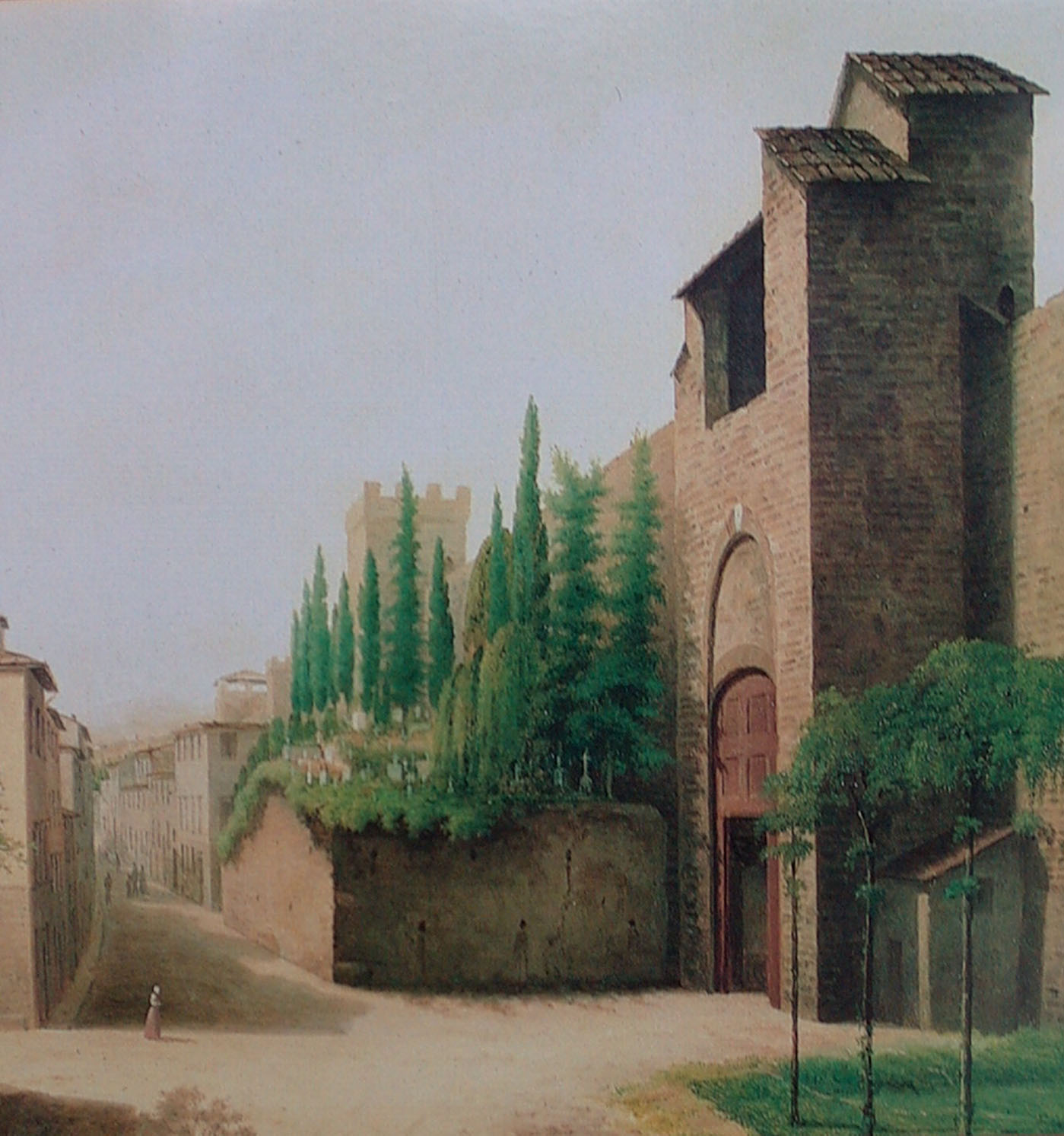
The Swiss-owned so-called 'English' Cemetery as it was from 1827 to the late 1860's. At the Risorgimento Giuseppe Poggi re-designed Florence, briefly Italy's capital, with Parisian boulevards, tearing down the medieval walls built by Arnolfo di Cambio and Michelangelo Buonarotti to do so. The 'English' Cemetery had nestled against the outside of the medieval wall by the Porta a' Pinti Gate. It still has the two stemma of the lily and the cross Arnolfo sculpted.

The Cemetery with its Gatehouse, housing the library and archive, as they are now. The tomb of Elizabeth Barrett Browning is the large sarcophagus on six colums to be seen in the centre on this side of the central path. The large building behind the Cemetery is the studio of Michele Gordigiani, who painted the two portraits of Elizabeth Barrett and Robert Browning which are now in London's National Portrait Gallery. Francesca Gordigiani, his descendant, still lives in his studio. We recommend you call up Google Earth and ask it for 'Piazzale Donatello, Florence', to see a further aerial view of the Cemetery and Gatehouse.
To call up each section of this file click on the following:
I. The Swiss Archives

Receipt for burial of Elizabeth Barrett Browning
II. The Swiss-owned so-called 'English' Cemetery
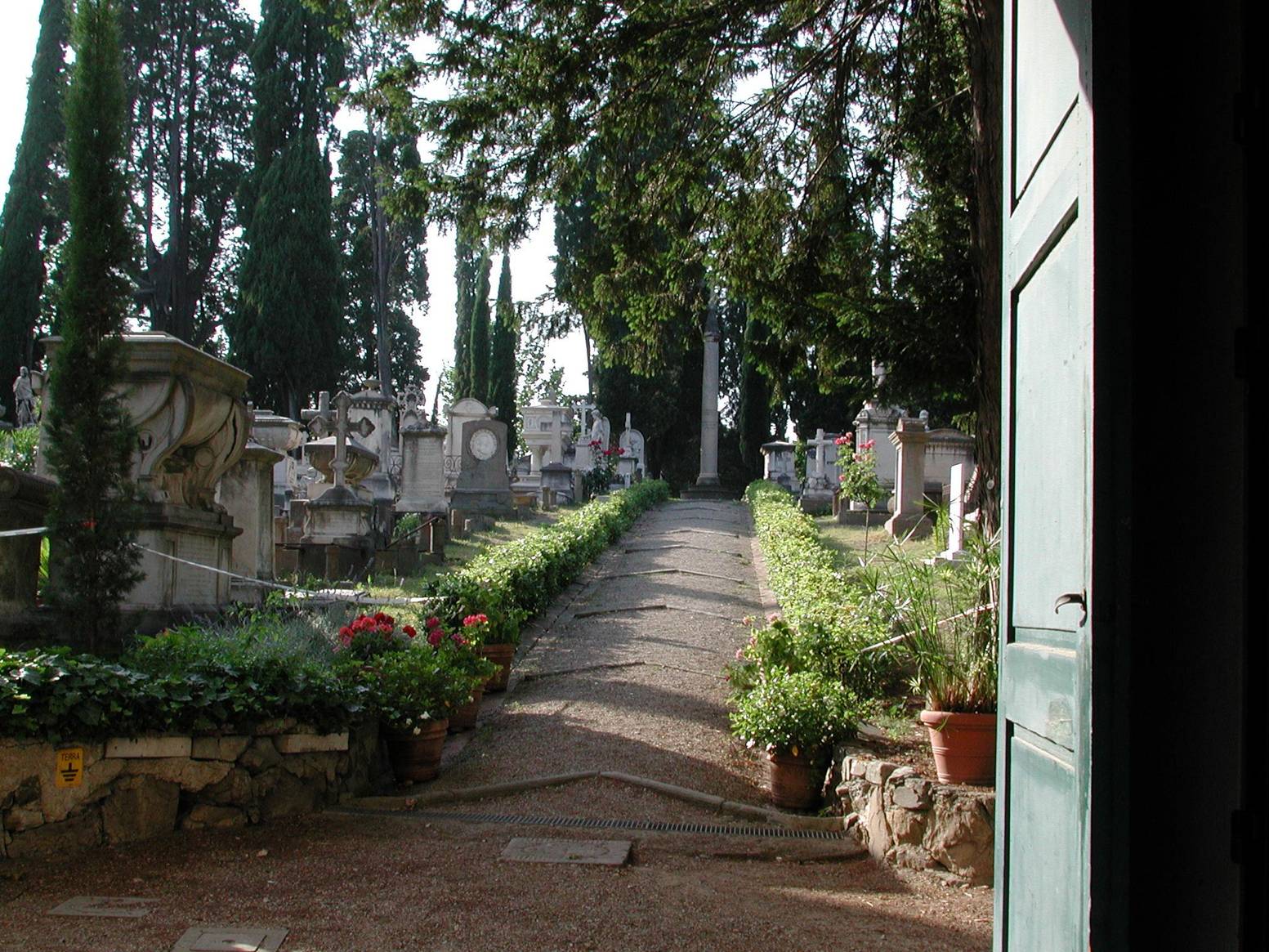
III. Florence in Sepia
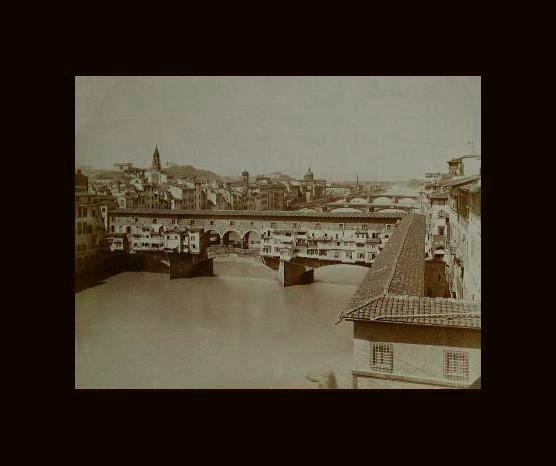
IV. Florence's Flood, 1966
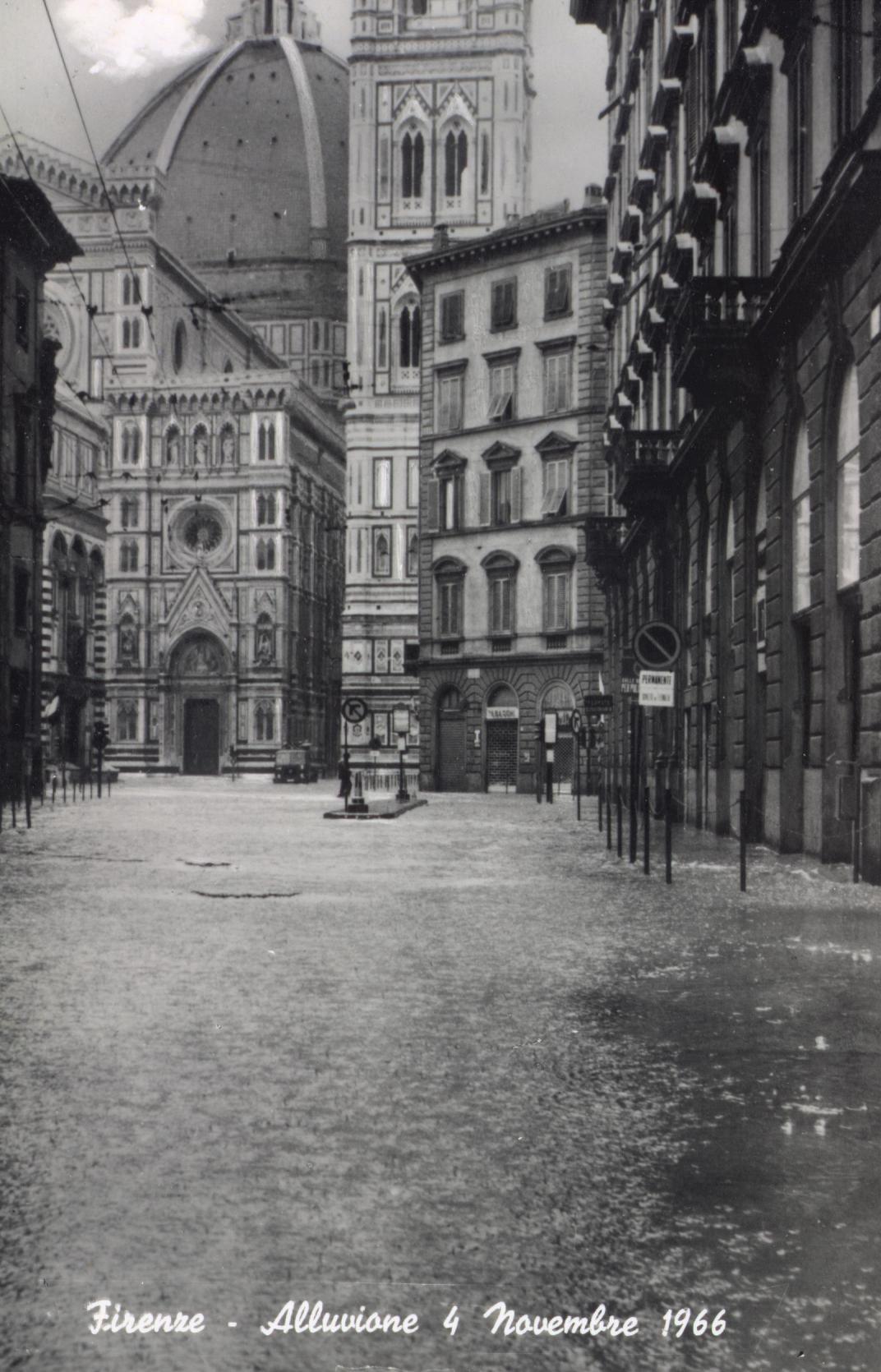
V. The Mediatheca 'Fioretta Mazzei'

VI. The Florin Website

VII. 'The City and the Book'
International Conferences in Florence

VIII. The Romanian Roma Restorers

IX. Julia Bolton Holloway, Custodian, Vita

We don't need to sign the petition anymore. It went off in the post to UNESCO this morning with 6000 signatures. Thanks!

